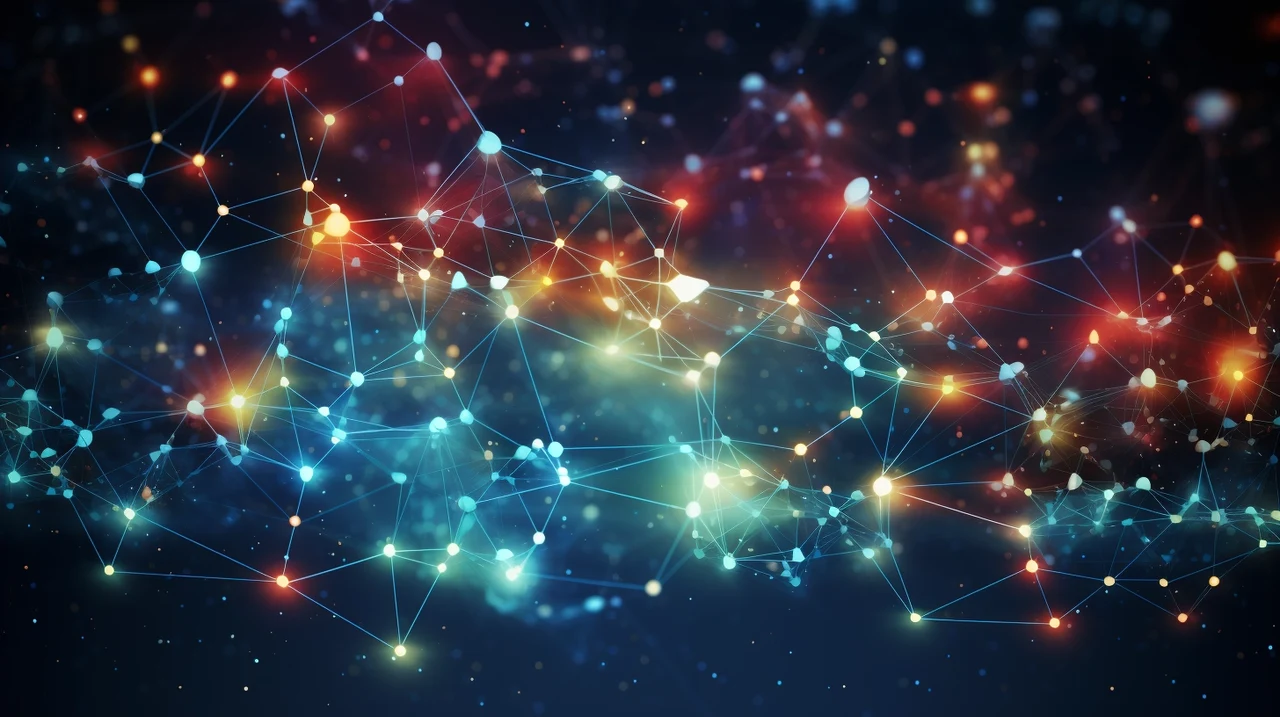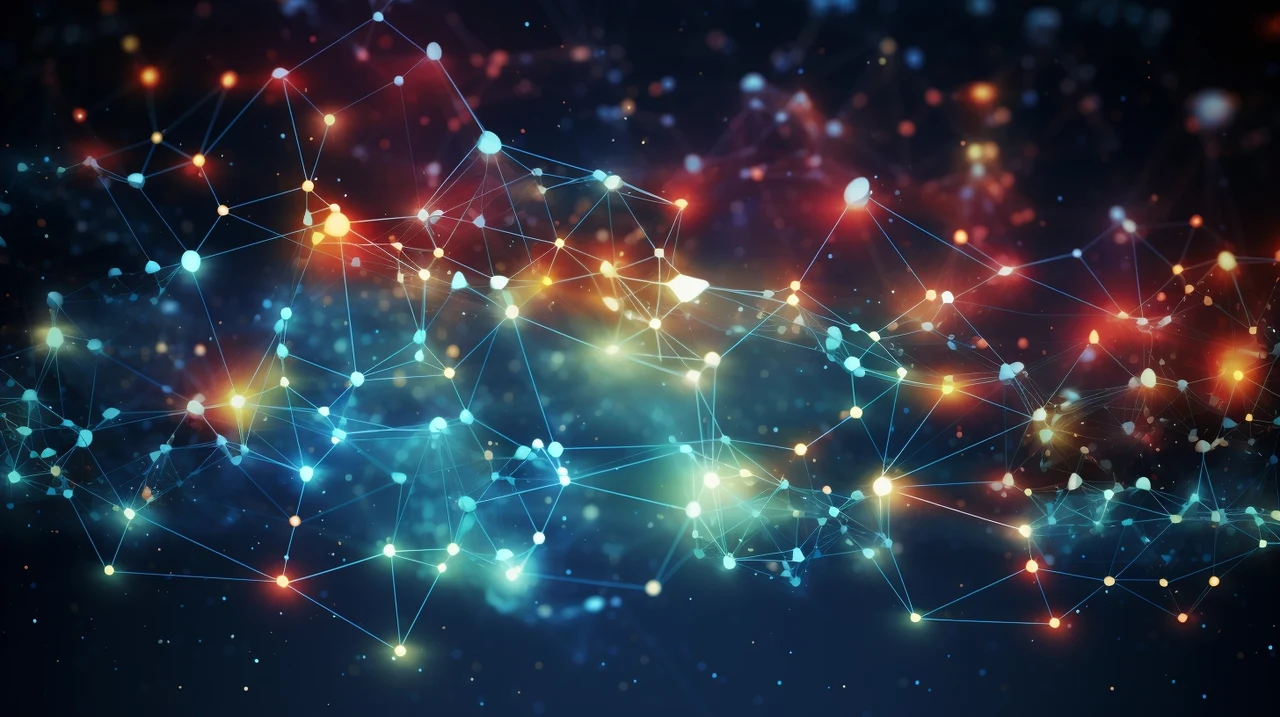
In the exciting world of artificial intelligence (AI), two standout technologies are making waves: Large Language Models (LLMs) like GPT-3 and Knowledge Graphs. These tools are transforming how we handle and analyze data, leading to smarter decision-making processes. This article will take you on a journey through the practical steps of combining LLMs with Knowledge Graphs, exploring the benefits and tackling the challenges that come with this integration.
What are Knowledge Graphs?
Knowledge graphs are sophisticated databases designed to store and organize information in a way that illustrates the relationships and connections between various concepts and entities. They represent data in a network of interconnected nodes and edges, where nodes symbolize entities such as people, places, and objects, and edges denote the relationships between them.
This structure enables machines and humans alike to understand complex associations and contextual nuances within the data. Knowledge graphs are pivotal in enhancing AI capabilities, particularly in areas like semantic search, data analysis, and natural language processing, by providing a rich, contextual framework for understanding and utilizing information.
LLMs are advanced AI systems that have the ability to understand and generate human-like text. They work by predicting what word comes next in a sentence, learning from vast amounts of data. Knowledge Graphs, on the other hand, are databases that organize information about concepts and the connections between them in a way that both people and machines can understand.
When you bring LLMs and Knowledge Graphs together, they enhance each other’s capabilities. LLMs can use the structured information in Knowledge Graphs to add context to their interpretations, while Knowledge Graphs benefit from LLMs’ nuanced understanding of language. This synergy can lead to AI responses that are not only more accurate but also more relevant to the context, whether it’s for a search engine or a digital assistant.
Knowledge Graphs quick reference guide
- Definition and Purpose:
- Organize and represent knowledge in a structured format.
- Facilitate understanding of relationships and connections between different concepts and entities.
- Benefits:
- Enhances data interoperability and integration.
- Improves the efficiency and accuracy of data retrieval.
- Enables more sophisticated, context-aware AI applications.
- Supports semantic search and advanced analytics.
- Aids in uncovering insights from complex and large datasets.
- Applications:
- Enhancing search engine capabilities with contextual understanding.
- Powering recommendation systems in e-commerce and streaming services.
- Improving natural language processing and understanding in AI systems.
- Enabling advanced data analytics in various fields like healthcare, finance, and customer service.
- Challenges:
- Requires high-quality, consistent, and up-to-date data.
- Managing and processing large volumes of data can be complex and resource-intensive.
- Ensuring data accuracy and minimizing bias in the knowledge representation.
- Future Potential:
- Continues to evolve with advancements in AI and machine learning.
- Holds immense promise for creating more intelligent, responsive, and personalized AI applications.
- Expected to play a key role in the development of more advanced AI systems.
Consider a healthcare AI that merges the text analysis prowess of LLMs with a Knowledge Graph that maps out the relationships between diseases, symptoms, and treatments. Such an AI could provide deeper medical insights or help diagnose conditions based on the symptoms patients report. In the realm of customer service, an AI chatbot powered by an LLM can have natural conversations with customers. If this chatbot is also linked to a Knowledge Graph that contains detailed information about the company’s products or services, it can offer precise and helpful information, greatly improving the customer’s experience.
However, integrating LLMs with Knowledge Graphs is not without its hurdles. One major challenge is ensuring that the data is of high quality and consistent. Both systems need to work with data that is accurate, up-to-date, and free from bias to avoid mistakes in the AI’s output.
Data accuracy is paramount
As the amount of data grows, the integrated system must also be able to process and analyze this information both efficiently and cost-effectively. This requires sophisticated algorithms and a strong infrastructure that can manage heavy workloads. To keep data accurate and reliable, it’s crucial to have strict processes for validating and cleaning the data. Automated tools can help identify and fix errors, and regular updates are necessary to keep the Knowledge Graph current and precise.
When it comes to dealing with the scale and efficiency of the system, developers can use distributed computing. This approach allows the system to adjust its processing power based on the current needs. Using cloud-based platforms can provide the flexibility needed to scale up or down depending on demand. Additionally, optimizing the algorithms that combine LLMs with Knowledge Graphs can reduce the computational load, making the system more efficient.
The combination of LLMs and Knowledge Graphs holds immense promise for enhancing AI applications in various industries. By understanding how these technologies work together and addressing the technical challenges of data quality, scalability, and efficiency, we can create AI systems that are not only powerful but also reliable and cost-effective. As we continue to explore this integration, we can expect to see a surge of innovative AI solutions that push the boundaries of what AI can achieve.
Filed Under: Guides, Top News
Latest timeswonderful Deals
Disclosure: Some of our articles include affiliate links. If you buy something through one of these links, timeswonderful may earn an affiliate commission. Learn about our Disclosure Policy.

